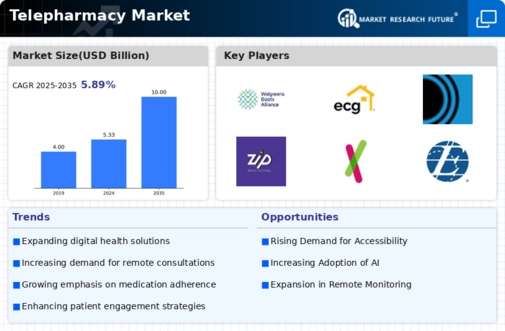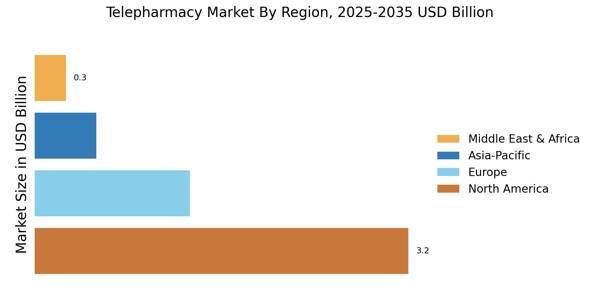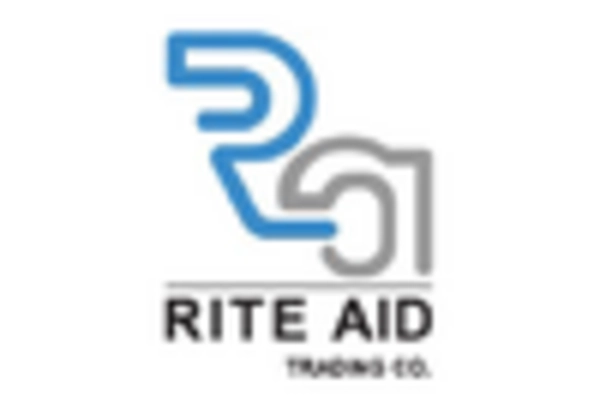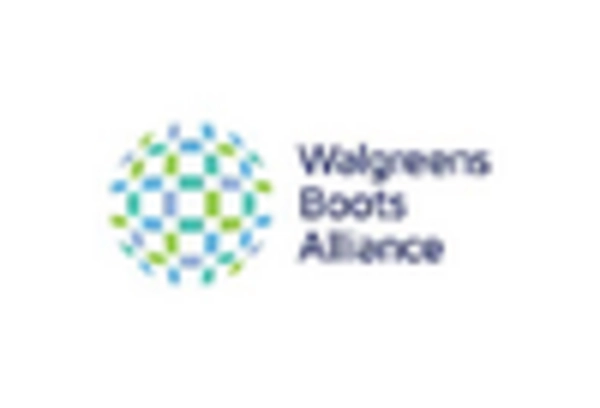Shift Towards Patient-Centric Care Models
The Telepharmacy Market is witnessing a shift towards patient-centric care models, which prioritize the needs and preferences of patients. This transformation is driven by an increasing recognition of the importance of personalized healthcare experiences. Telepharmacy Market services enable pharmacists to engage with patients more effectively, providing tailored medication counseling and support. By leveraging telecommunication technologies, pharmacists can address patient concerns in real-time, fostering a collaborative approach to medication management. Data suggests that patient satisfaction rates are higher among those utilizing telepharmacy services, as they appreciate the convenience and accessibility offered. This shift towards patient-centric models is likely to propel the growth of the telepharmacy market, as healthcare providers seek to enhance patient engagement and outcomes.
Technological Advancements in Telepharmacy
Technological advancements play a crucial role in shaping the Telepharmacy Market. Innovations such as mobile applications, artificial intelligence, and secure communication platforms enhance the delivery of pharmaceutical care. These technologies facilitate real-time consultations, medication adherence monitoring, and personalized patient education. The integration of advanced data analytics allows pharmacists to better understand patient needs and optimize medication therapy management. Furthermore, the increasing use of electronic health records (EHRs) streamlines the workflow for telepharmacy services, ensuring that pharmacists have access to comprehensive patient information. As these technologies continue to evolve, they are likely to drive further growth in the telepharmacy sector, making it an attractive option for both providers and patients.
Growing Focus on Chronic Disease Management
The Telepharmacy Market is significantly influenced by the growing focus on chronic disease management. With the prevalence of chronic conditions such as diabetes, hypertension, and cardiovascular diseases on the rise, there is an increasing need for effective medication management strategies. Telepharmacy Market services offer a viable solution by providing patients with ongoing support and monitoring, which is essential for managing these conditions. Data indicates that patients who engage with telepharmacy services demonstrate improved medication adherence and health outcomes. This trend not only enhances patient quality of life but also reduces healthcare costs associated with hospitalizations and complications. As healthcare systems prioritize chronic disease management, telepharmacy is poised to become an integral component of patient care.
Rising Demand for Remote Healthcare Services
The Telepharmacy Market experiences a notable surge in demand for remote healthcare services. This trend is driven by an increasing number of patients seeking convenient access to medications and consultations without the need for physical visits to pharmacies. As healthcare systems evolve, the integration of telepharmacy solutions allows for efficient medication management, particularly for patients in rural or underserved areas. According to recent data, the telehealth sector, which encompasses telepharmacy, is projected to grow significantly, with estimates suggesting a compound annual growth rate of over 25% in the coming years. This growth indicates a strong market potential for telepharmacy services, as they align with the broader shift towards digital health solutions.
Increased Regulatory Support for Telepharmacy
Regulatory support is emerging as a key driver for the Telepharmacy Market. Governments and regulatory bodies are recognizing the potential of telepharmacy to improve access to medications and healthcare services. Recent policy changes and guidelines have been established to facilitate the practice of telepharmacy, ensuring that it adheres to safety and quality standards. This regulatory backing not only fosters trust among patients but also encourages healthcare providers to adopt telepharmacy solutions. As more jurisdictions implement supportive regulations, the market is likely to expand, allowing for greater integration of telepharmacy into existing healthcare frameworks. This trend indicates a positive outlook for the industry, as it aligns with the broader goals of enhancing healthcare accessibility.


















Leave a Comment